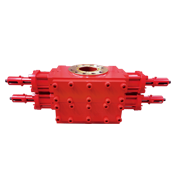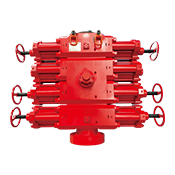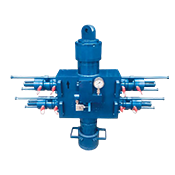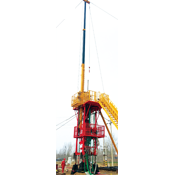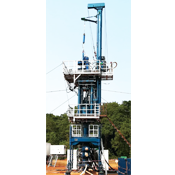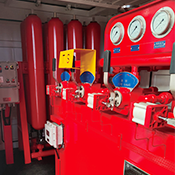Understanding the Critical Role of U Three Ram Blowout Preventers in Safety Protocols
2025-04-15

Understanding the Critical Role of U Three Ram Blowout Preventers in Safety Protocols
Table of Contents
1. Introduction to Blowout Preventers and Their Importance
2. What is a U Three Ram Blowout Preventer?
3. The Essential Role of BOPs in Safety Protocols
3.1 Preventing Catastrophic Blowouts
3.2 Ensuring Operational Integrity
4. Key Components of U Three Ram Blowout Preventers
4.1 The Ram Assemblies
4.2 The Control System
4.3 The Pressure Rating
5. Best Practices for Implementing U Three Ram BOPs
5.1 Regular Maintenance and Inspection
5.2 Training and Compliance
6. Case Studies: The Impact of Effective BOP Usage
7. Frequently Asked Questions (FAQs)
8. Conclusion: The Future of Safety Protocols in Oil and Gas
1. Introduction to Blowout Preventers and Their Importance
In the oil and gas sector, safety is paramount. The potential for blowouts can lead to catastrophic events, resulting in loss of life, environmental damage, and significant financial repercussions. Blowout preventers (BOPs) serve as the first line of defense against such incidents. Among these, the **U Three Ram Blowout Preventer** stands out due to its robust design and reliability. This article delves into the necessity of BOPs in safety protocols, emphasizing the U Three Ram variant's criticality in risk management.
2. What is a U Three Ram Blowout Preventer?
The U Three Ram Blowout Preventer is a specialized device designed to control and seal the wellbore in the event of a blowout. It features three ram assemblies that operate simultaneously or independently to contain high-pressure fluids. This design allows for a quick and effective response to unexpected pressure surges, making it an invaluable asset in drilling operations.
3. The Essential Role of BOPs in Safety Protocols
Understanding the role of U Three Ram BOPs in safety protocols involves recognizing their ability to act as a safety net for drilling operations.
3.1 Preventing Catastrophic Blowouts
The primary function of a U Three Ram Blowout Preventer is to prevent blowouts, which occur when uncontrolled pressure from the formation forces oil or gas to the surface. Such incidents can lead to devastating fires, explosions, and environmental disasters. By swiftly sealing the well, BOPs help mitigate these risks significantly.
3.2 Ensuring Operational Integrity
BOPs also play a vital role in maintaining the integrity of drilling operations. They allow for controlled pressure management, ensuring that operations can proceed safely without risking the integrity of the wellbore. This operational control is essential in preventing premature equipment failure and maintaining safety throughout the drilling process.
4. Key Components of U Three Ram Blowout Preventers
A comprehensive understanding of U Three Ram BOPs involves examining their essential components, which contribute to their effectiveness.
4.1 The Ram Assemblies
The U Three Ram BOP includes three ram assemblies: two blind rams and one shear ram. Blind rams are designed to seal the wellbore, while shear rams can cut through drill pipe to seal the well in extreme emergencies. This versatility is crucial in varying scenarios encountered during drilling operations.
4.2 The Control System
The control system of the U Three Ram BOP is engineered for reliability and quick response. Operators can activate the system remotely, allowing for immediate sealing in emergencies. This proactive feature enhances safety protocols by enabling real-time decision-making.
4.3 The Pressure Rating
U Three Ram Blowout Preventers are designed to handle high-pressure conditions, typically rated for pressures up to 15,000 psi or more. This high pressure rating ensures that they can withstand the extreme conditions often encountered in deep-water drilling operations.
5. Best Practices for Implementing U Three Ram BOPs
To maximize the effectiveness of U Three Ram BOPs in safety protocols, companies should adhere to best practices.
5.1 Regular Maintenance and Inspection
Routine maintenance and inspection are vital for ensuring BOP functionality. Regular checks can help identify potential issues before they lead to failure. Companies should establish a comprehensive maintenance schedule and carry out inspections in accordance with industry standards.
5.2 Training and Compliance
Training personnel on BOP operation and safety protocols is essential. Comprehensive training programs promote a culture of safety, ensuring that staff are prepared to respond effectively in emergency situations. Compliance with regulations and standards further enhances the reliability of these safety measures.
6. Case Studies: The Impact of Effective BOP Usage
Examining real-world examples of BOP usage can illuminate their significance in preventing disasters. Case studies reveal instances where effective BOP deployment has successfully mitigated blowout risks, highlighting the crucial role these devices play in safety protocols.
7. Frequently Asked Questions (FAQs)
1. What is the main function of a U Three Ram Blowout Preventer?
The main function of a U Three Ram Blowout Preventer is to seal the wellbore and control high-pressure fluids during drilling operations to prevent blowouts.
2. How often should BOPs be inspected?
BOPs should be inspected regularly, typically after every drilling operation and at least once a month, or according to manufacturer specifications and industry regulations.
3. What distinguishes the U Three Ram BOP from other BOP types?
The U Three Ram BOP features three ram assemblies, allowing for both sealing and emergency pipe cutting, which provides versatility in emergency responses.
4. What are the consequences of a blowout?
Consequences of a blowout can include severe environmental damage, loss of life, significant financial losses, and damage to equipment and facilities.
5. What training is required for personnel operating a BOP?
Personnel operating a BOP should undergo comprehensive training that covers the operation, emergency procedures, and maintenance protocols to ensure safety and operational integrity.
8. Conclusion: The Future of Safety Protocols in Oil and Gas
In conclusion, U Three Ram Blowout Preventers are integral to safety protocols in the oil and gas industry. Their design and functionality not only prevent catastrophic blowouts but also promote operational integrity. By adhering to best practices for maintenance, inspection, and training, companies can leverage the full potential of BOPs to enhance safety measures. As the industry evolves, the importance of robust safety protocols will remain paramount, ensuring the protection of personnel, the environment, and assets in this high-stakes field. Investing in effective BOP technology and training will continue to be a cornerstone of safe drilling operations.
Related News
Contact Us
Mailbox:
tiehu@tiehupetro.com
Telephone:
86-317-2616808
Address:
Yanling Industrial Zone, Renqiu City, Cangzhou City, Hebei Province, China


